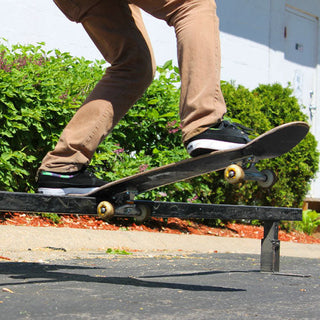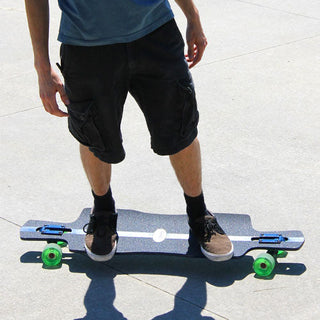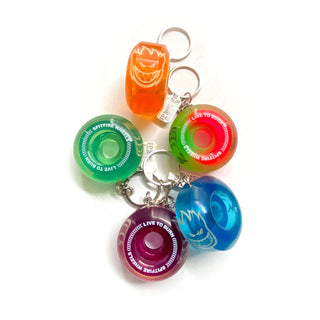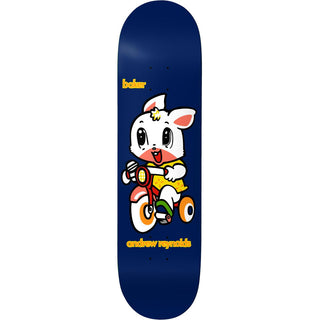Buyer’s Guide Longboard Wheels
As the name states, these are the wheels on the longboard. Wheels are what causes the board to glide across the surface you skate on. Most wheels are made of polyurethane with a hollow hub for bearings to fit in. They come in a range of sizes, colors, and durometer (hardness). Each style is made to serve a different preference.
Longboard wheels are made to different specs than shortboard wheels. They have a larger diameter and width. This is so the board can go farther, faster, and have more responsive turning. Like shortboard wheels, size and durometer are important, however contact patch, core, and surface are also important.
Features
Size
The size range is from 60mm-107mm. Wheels under 60mm are most likely shortboard wheels, for more info on those please refer to the shortboard wheels buying guide.

SMALL (60mm - 69mm): Smaller wheels are slower by nature, but they offer more control when it comes to freestyle skating. This size is more ideal for someone who wants to do freestyle skating on flatter surfaces or mild slopes.
AVERAGE (70mm - 74mm): Average sized wheels are very popular because they have benefits from both small and large wheels. They are still good for freestyle skating, but are also good for mild/intermediate downhill skating. Great choice for cruising and carving. If you are new to longboarding, this is a good size to start with and change based off of what you are looking for.
LARGE (75+): Larger wheels are a great choice for someone looking for a downhill wheel, or a wheel that can handle a higher speed. Great choice for cruising and carving. Although the bigger the wheel the faster it can get, anything past 85mm is more of a novelty wheel.
Durometer
Durometer is the hardness of a wheel. Durometer affects the ride of a wheel just as much as size so be sure to check it before buying. Most longboard wheels have the durometer printed on the wheel, but this is not always the case.
SOFT (76a - 80a): Softer wheels give you more grip. This is a great choice for anyone looking for a downhill wheel. Another benefit of a softer wheel is it reduces the vibrations caused by rougher surfaces. If you like sliding, and are looking for a smoother, buttery slide, these are the wheels for you. Note that softer wheels tend to have a shorter lifespan than harder wheels.
AVERAGE: (81a – 83a): This is a good choice for someone who wants a wheel that is good across the board. The benefits of a softer wheel, but for someone who would like a little less grip. If you are new to longboarding, this is a good durometer to start with and change based off of what you are looking for.
HARD (84a+): Harder wheels have less grip than softer wheels. This is a good choice for someone who is looking to do more of slower freestyle skating. Harder wheels tend to have the longest lifespan of wheels.
Contact Patch
Contact Patch is the widthwise measurement of that wheel that makes contact with whatever surface you are skating on. This is not always the “width”, because some wheels round up towards the edge of the wheel, so the contact patch ends up thinner than the width. That is why they are separate measurements.

Narrow (Less than 39mm): Narrow contact patches are great for sliding and slower freestyle skating. It allows the wheel to break free easier since there is less wheel to slide.
Average (40 - 45mm): The most common sizes, wheels with a contact patch in this range will be good across the board. It has more grip than a narrow wheel, but can still be used for sliding. Great for cruising, carving, and freestyle skating. If you are new to longboarding, this is a good size to start with and change based off of what you are looking for.
Wide (46+): Wider wheel patches have more grip than more narrow wheels. This allows for higher speeds, and more stability at those speeds. A great choice for someone who is looking for a downhill wheel, or a smooth ride when cruising or carving.






